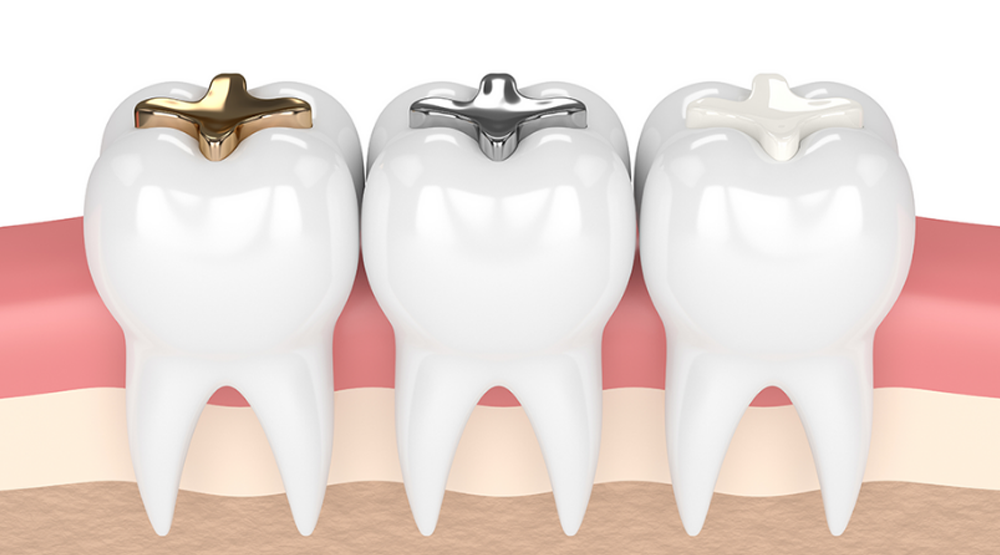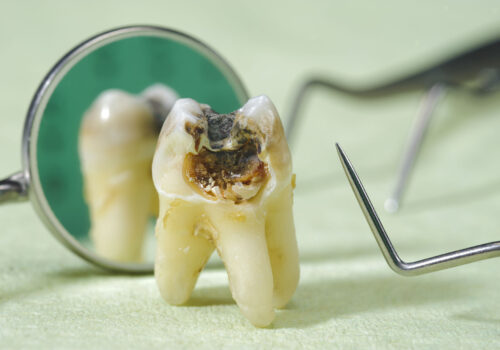Amalgam Fillings vs. Composite; Mercury Filling Removal Pros and Cons

Silver amalgam fillings are widely offered on the NHS when a white composite filling is not deemed necessary. Private practices also offer silver fillings to patients who want the cheapest, non-cosmetic option.
But because silver fillings contain mercury, many people ask the question: Are amalgam fillings safe?
If you’re worried about mercury poisoning from fillings and you want to know the benefits of white fillings vs. silver, you’re in the right place. Here you can discover the facts about what teeth fillings are made of, results from scientific studies, and the practical pros and cons of different filling materials.
Do you want to get your amalgam fillings removed, whether for cosmetic or health reasons? Read the arguments for and against replacing silver fillings with white composite ones before you decide what to do.
We hope this information empowers you to make the right choice for restoring your teeth!
What are fillings made of?
The purpose of a tooth filling is to repair, strengthen and protect teeth that have been damaged by tooth decay.
In this article, we’re going to focus on the two most common materials used for dental fillings in the UK: amalgam (silver metal) and composite (tooth-coloured material). Other materials like glass ionomer and gold are also available but are less often used.
Silver amalgam fillings
Metal fillings are common in the UAE and worldwide. It’s almost 200 years since dental amalgam was first used in Europe to fill teeth cavities. Its quality has improved greatly over the years, as have the dentistry techniques used to place fillings. It’s now the most commonly used type of filling around the world, according to the World Health Organization.
Amalgam fillings may be called ‘silver fillings‘ or ‘black fillings‘ because of their colour (they become darker over time). They’re also known as ‘mercury fillings‘ because – you guessed it – there is mercury in amalgam fillings. It’s this ingredient that has made dental amalgam the subject of continuing controversy, due to concerns about its impact on human health both directly and through environmental pollution. Later in this article, we’ll look at whether these concerns are warranted and what side effects silver fillings might lead to.
Dental amalgam definition
For now, let’s look at the basics: what is amalgam filling?
Dental amalgam is a metal made by mixing elemental (liquid) mercury with silver, tin and copper in powdered form.
Are you worried about amalgam fillings?
The percentage of mercury in amalgam fillings is around 50%, then about 20% silver, 16% tin, 15% copper plus other trace metals. The exact composition your dentist uses may vary slightly, but there is always between 45% and 55% mercury in amalgam fillings.
Once the mercury is mixed with the other metals it forms a putty that can be easily pressed into the cavity being filled. It takes around 24 hours to fully harden.
Pros and cons of amalgam
Amalgam has poor aesthetics. Aside from concerns over toxicity, which we’ll explore later, the main drawback of amalgam is the ‘metal teeth‘ look. A silver tooth filling might not bother you if it’s tucked away at the back of your mouth, but many people don’t like the idea of others being able to see their fillings when they smile or laugh.
On the plus side, amalgam fillings are cheaper than any other kind and are available to patients. They are also relatively straightforward to place, meaning you spend less time in the dentist’s chair.
From a technical point of view, amalgam is quick and easy to place compared to other types of filling. However, because it doesn’t chemically bond with the tooth, some of the healthy tooth structure has to be removed in order to prepare a space that will keep the filling secure. It is therefore a more invasive type of filling which weakens the tooth structure and increases the risk of tooth fractures.
White composite fillings
The most common type of amalgam-free filling material is resin composite. There are various different formulae used for dental composite, but they all contain a kind of synthetic resin that gives them a plastic-like composition.
Composite fillings were first introduced in the 1960s and have undergone various changes and refinements in the decades since. Improvements are still ongoing, and it’s realistic to expect that composite – or some other alternative – will eventually replace amalgam completely. In many Scandinavian countries, amalgam is more or less abolished and used in only very few cases.
Ask a dentist: Are white fillings weaker than silver fillings?
While in the past, white fillings used to be weaker than metal fillings, the new generations of composite material are very compatible with the strength of natural teeth.
This means that composite, or white, fillings, are in no way more fragile than metal fillings.
Pros and cons of composite fillings
Composite fillings need to be replaced. Composite material can discolour on the edges over time, never on the surface though
Composite fillings are shaded to match the natural tooth colour as closely as possible, making them almost undetectable.
Over time, however, resin composite can stain and become more noticeable. It can also shrink slightly if not set properly, creating small gaps that harbour bacteria.
The process for placing composite fillings requires more time and skill than amalgam. The tooth surface must be kept completely dry while the surface is etched and the filling is built up in layers that are cured one at a time.
One benefit of composite is that it chemically bonds to the tooth structure which offers extra support and means that no additional healthy tooth has to be removed in the process.
For a long time, amalgam was regarded as the best direct filling material in terms of strength and durability. Metal fillings last 10-15 years and can withstand a great deal of pressure on biting surfaces of the teeth. However, as composite resins improve, they are edging closer to rivalling amalgam in this regard.
Still, dentists may advise against using composite for large fillings and those in stress-bearing positions because of its physical limitations. White fillings usually need to be replaced after 5-10 years – and sooner if they crack or fracture under pressure







Leave a Reply